My 13th fairy crown for July 2nd features a plant I did not choose for my garden; rather, it chose me, tawny daylily (Hemerocallis fulva). As well, there are hosta flowers, the red fruit of serviceberry (Amelanchier canadensis) and crimson-red knautia flowers (K. macedonica).

When we moved to our home in the early ‘80s, a new neighbor spied the orange-flowered plants that crept into the back yard under the fence, along with ostrich ferns. As a gardener, I knew they were daylilies, originally from Asia and botanically named Hemerocallis fulva, but as a former west coaster I was unaware of their uniquely northeastern cultural history.
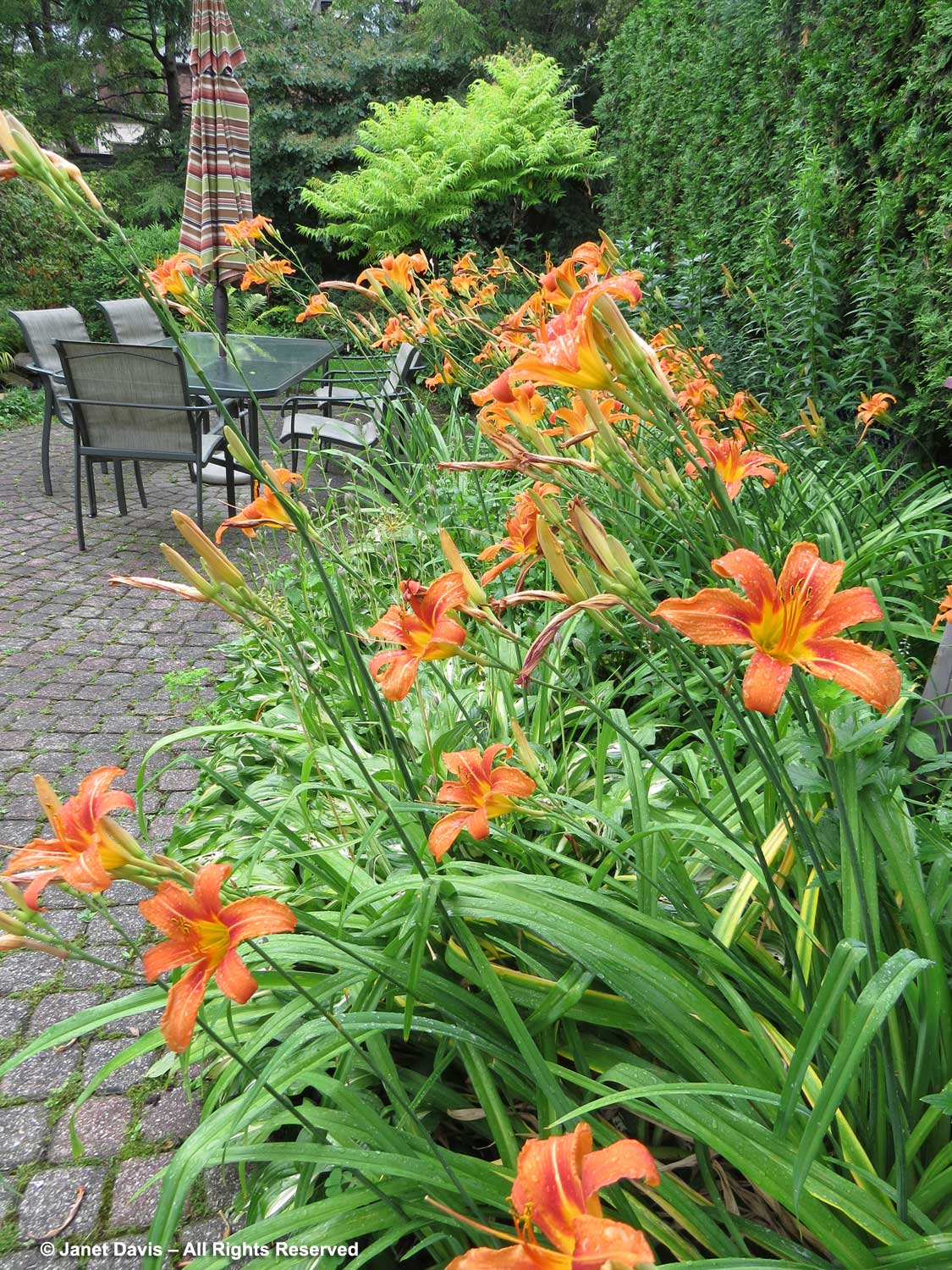
“They used to call these July 12th lilies,” said my neighbor. When I asked why, she said they were symbolic of Ireland’s 1690 Battle of the Boyne and used by Unionists or “Orangemen” as a floral motif to commemorate the victory of Protestant King William over the deposed Catholic King James. As one Ontario writer noted: “The planting of Orange lilies in front of one’s property, displayed a family’s Protestant/Orange Lodge status, like flags.” With Catholic ancestors in Northern Ireland but, as a former west coaster, largely ignorant of historic eastern prejudices, I looked askance at the poor, innocent, orange lilies. But it was their territorial ambition in my garden that bothered me, not their association with old sectarian feuding; they are almost impossible to eradicate. I soon learned that this Asian daylily has been called other uncomplimentary names: ditch lily and outhouse lily. Others call it tawny daylily, 4th of July lily, and plain old orange lily. It is ubiquitous throughout North America, often as an escape around farms where 19th century settlers planted it in their gardens.
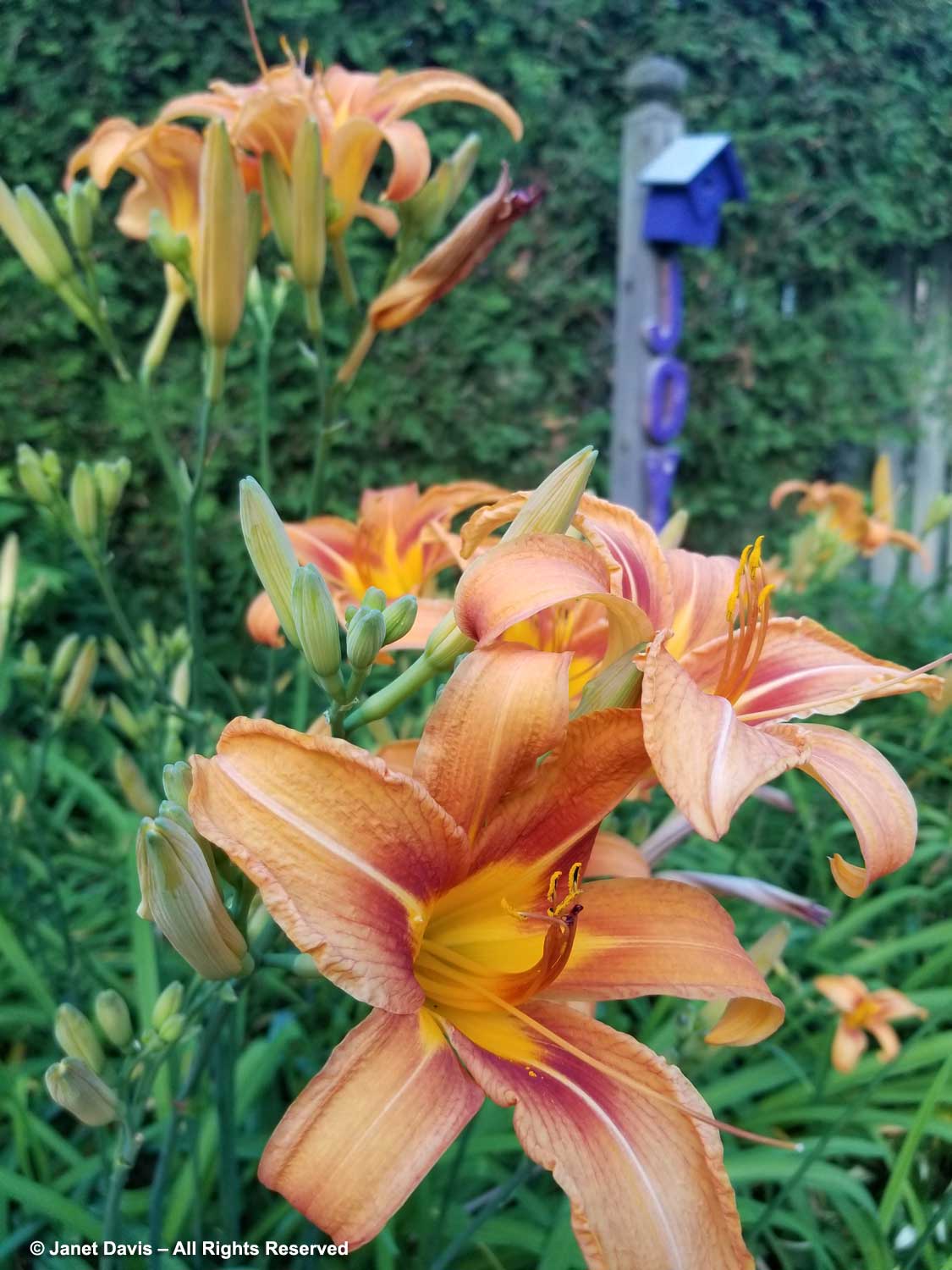
Unlike the expensive daylilies I actually planted, tawny daylily overran my border, and its tuberous roots are very hard to eliminate. In one spot, it flowers near the indigo-blue spikes of monkshood (Aconitum napellus). It is a survivor, so we co-exist now, with occasional skirmishes to keep it from spreading everywhere.
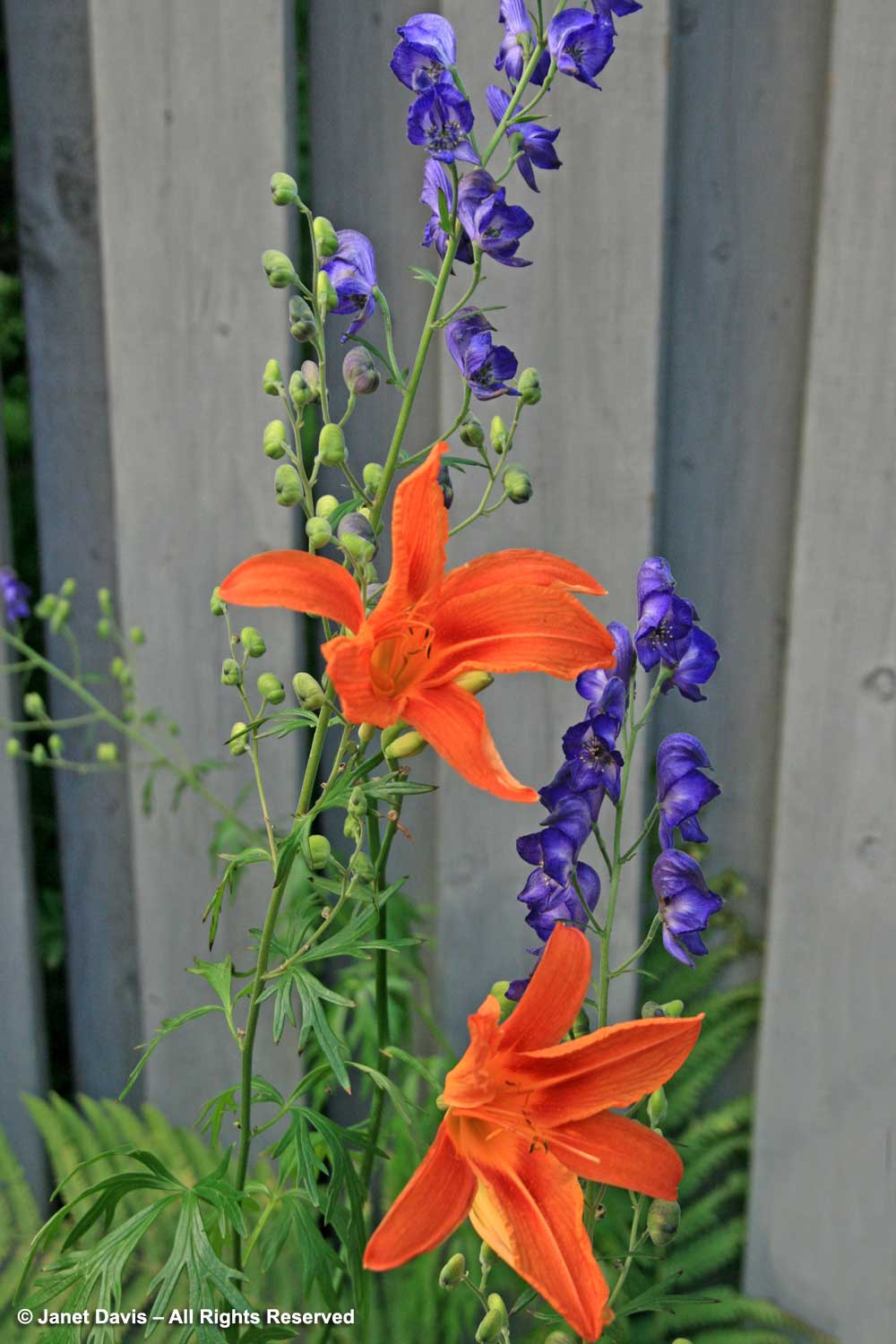
Knautia macedonica, on the other hand, is one of those unassuming little perennials that seemingly disappear on their own, only to pop up in another spot a year later. Despite being short-lived, I know its seedlings will find a few square inches of soil in my pollinator garden each June, crowded as it is with pushy echinacea, sedum, rudbeckia and sage and catmint now fading.
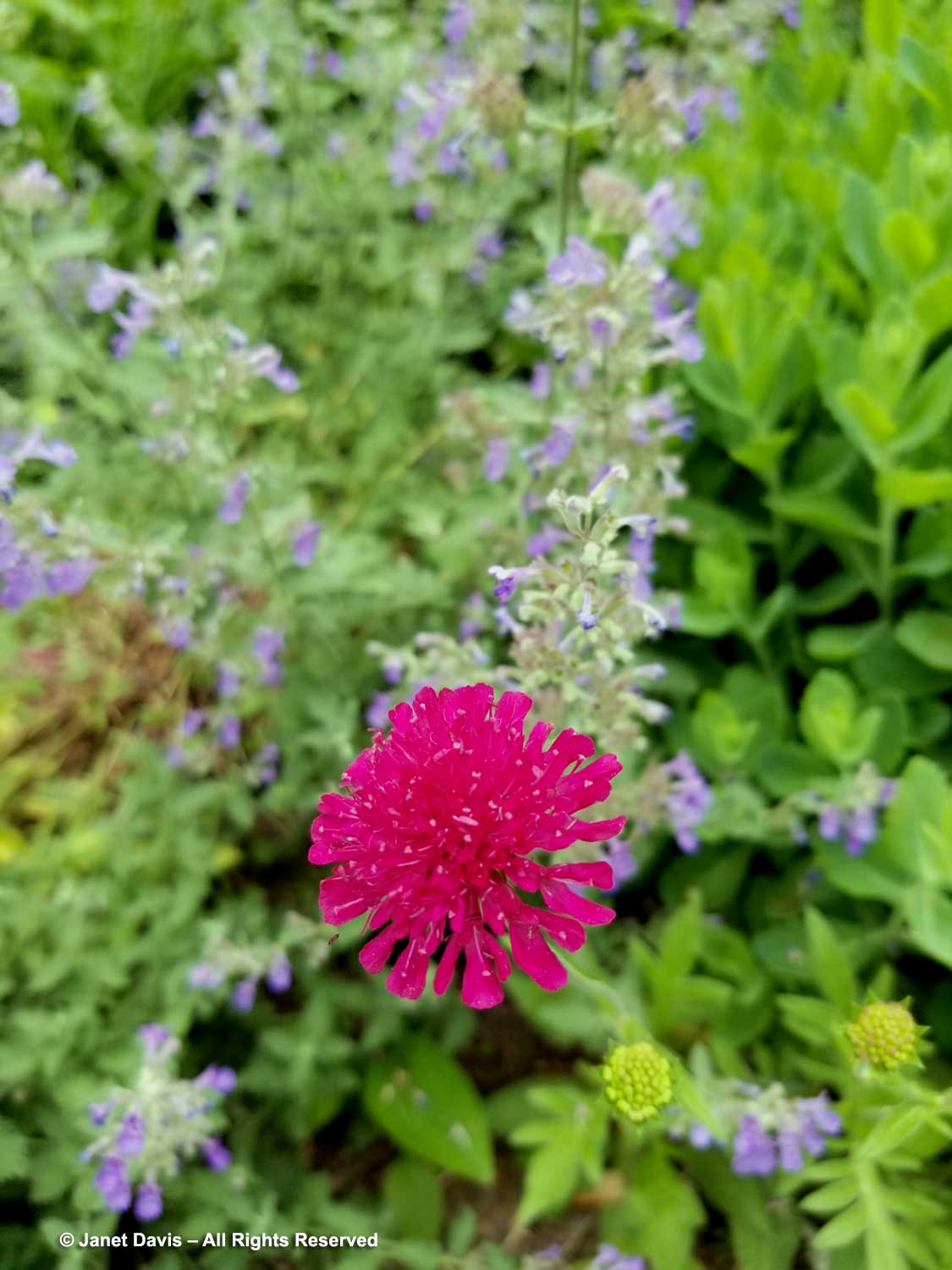
Knautia’s crimson-pink, pincushion flowers attract bumble bees, honey bees, and small native solitary bees. I love photographing them in public gardens, their leg sacs weighed down with the most amazing magenta pollen.
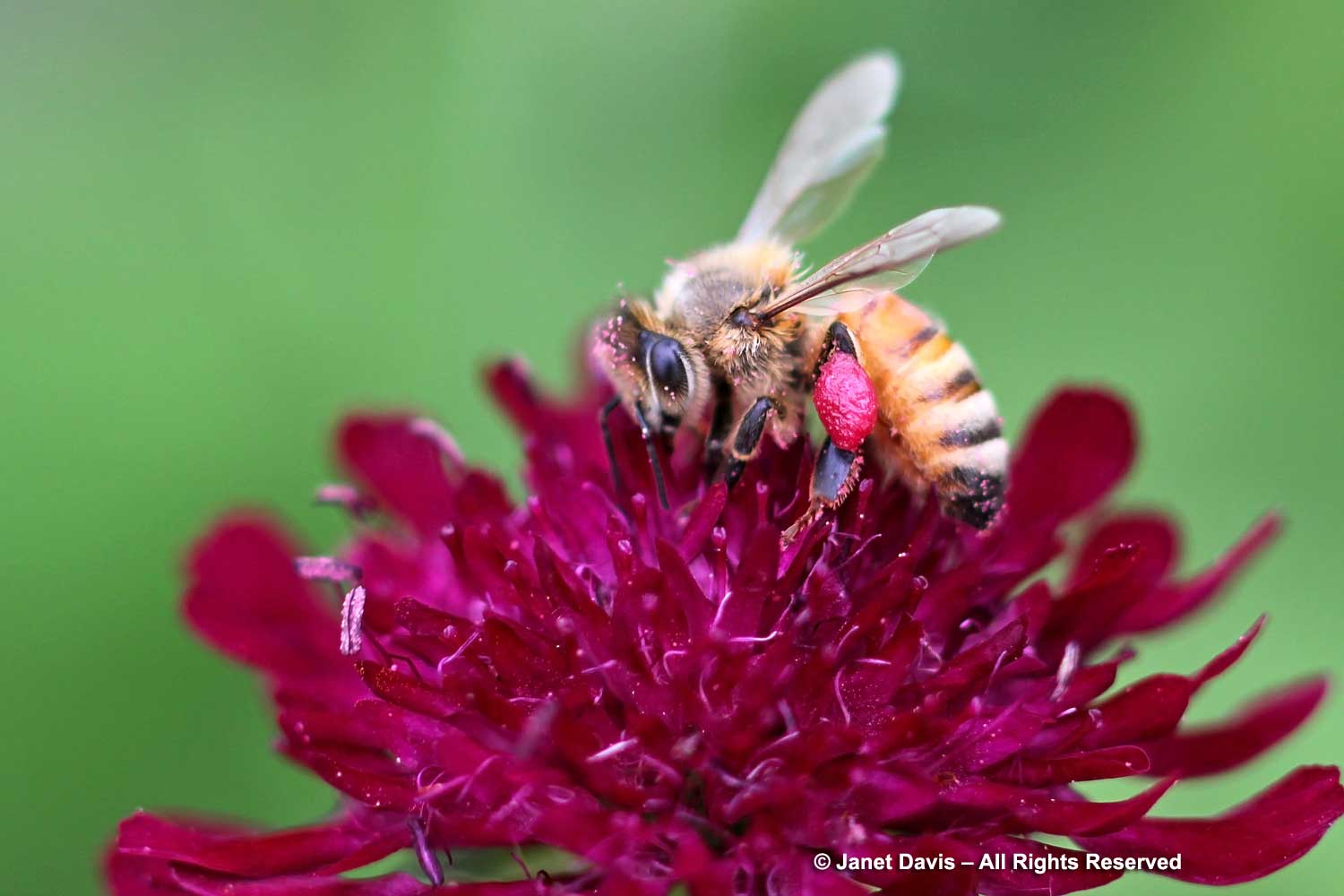
Here it is in my pollinator garden with a busy little bicoloured agapostemon (A. virescens).
My fairy crown also features the sturdy blossoms of the big, lime-green hosta ‘Zounds’. If you’re a hosta collector, you treasure each and every one, the newer and rarer and more colorful the better. But in my garden, hostas can charitably be described as “useful”; they fill in spaces, are low-maintenance, and the bees love them.
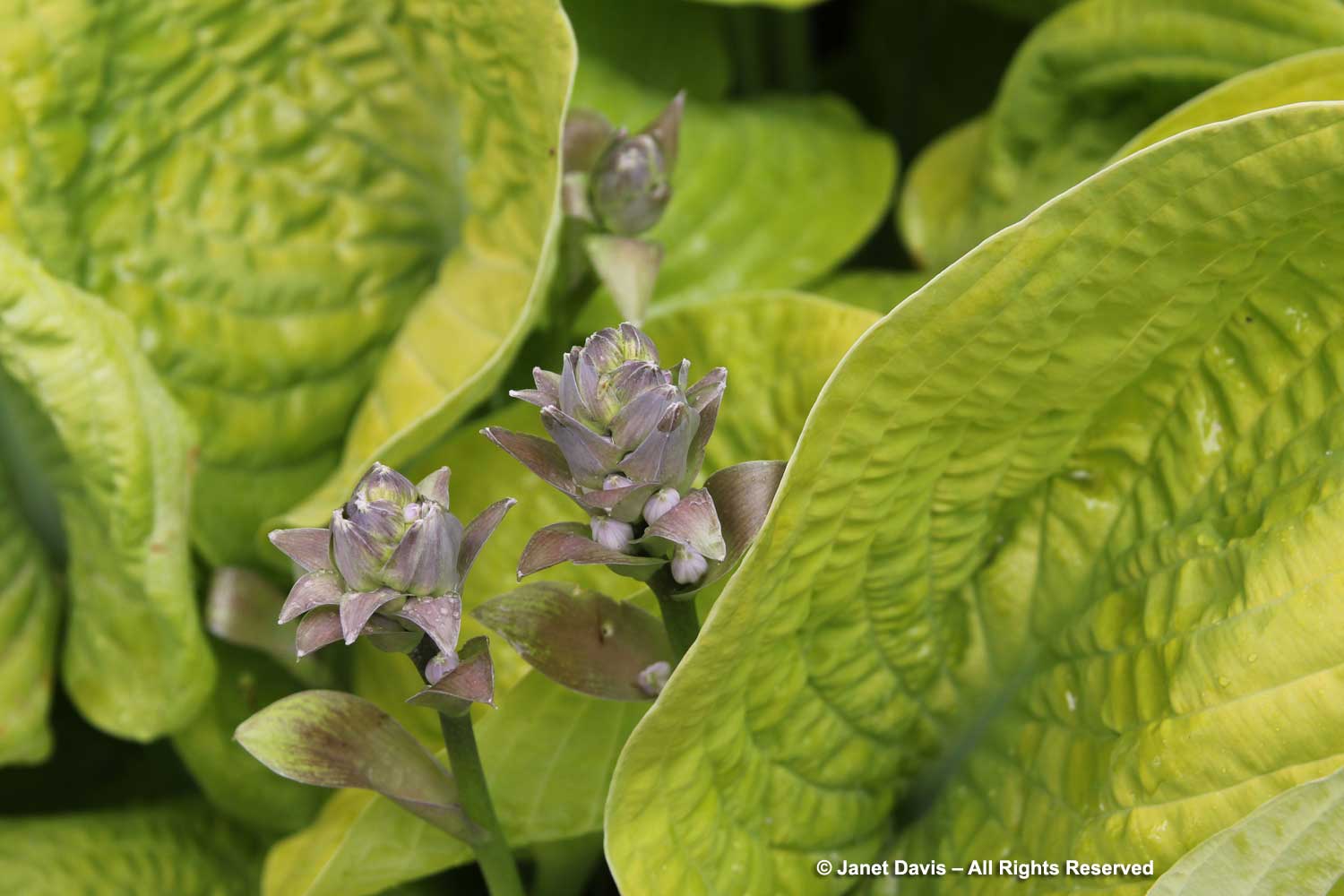
That last part is very important to me, yet not fully appreciated by people who design pollinator gardens. And, strangely, many hosta collectors remove the flowers to focus attention on the leaves.
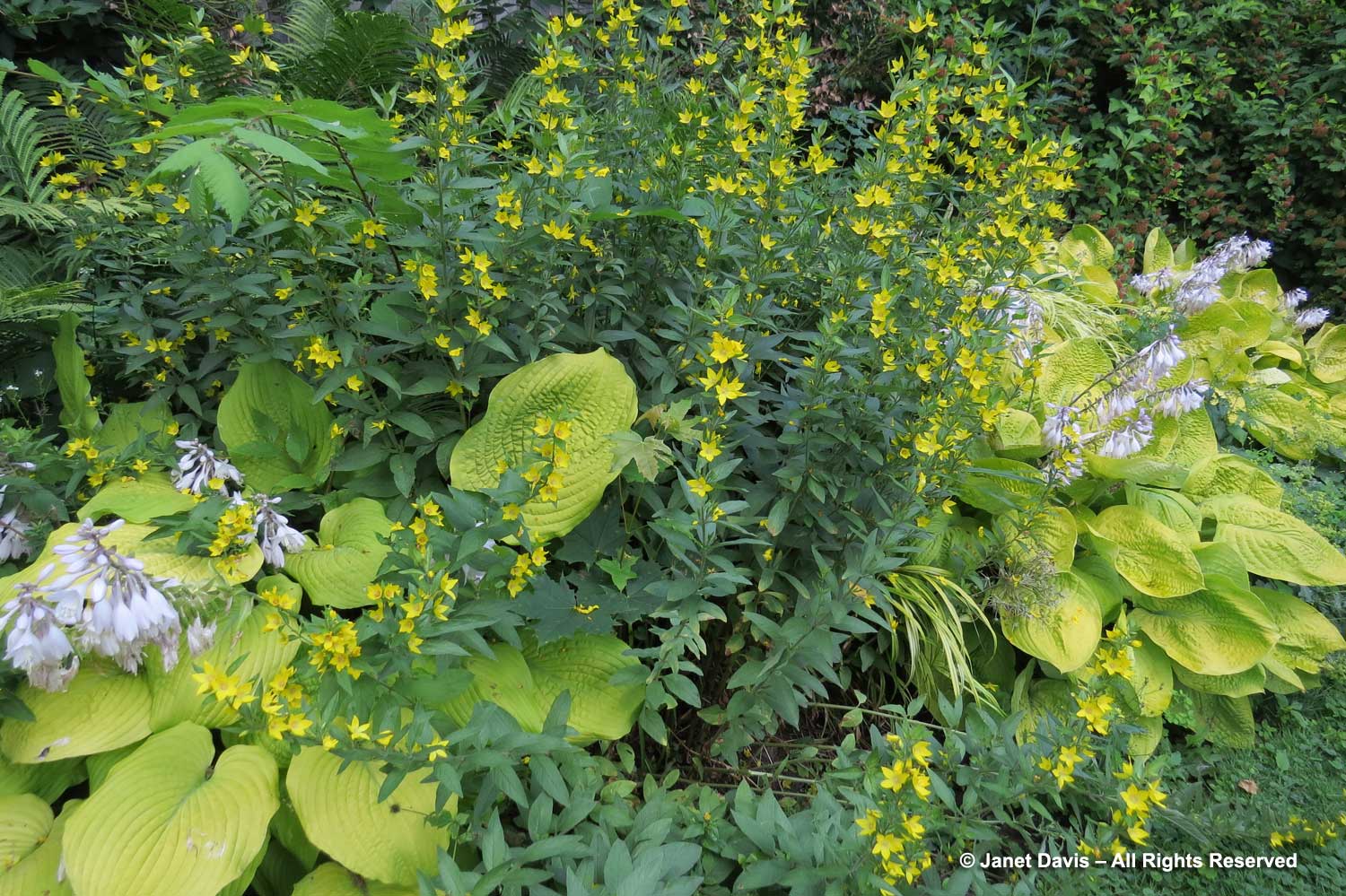
Simply put, the flowers of most hostas are nectar-rich and well-suited to the tongues of bumble bees, honey bees, and carpenter bees. Especially popular with bees are the pale purple blossoms of old-fashioned Hosta ‘Albomarginata’….
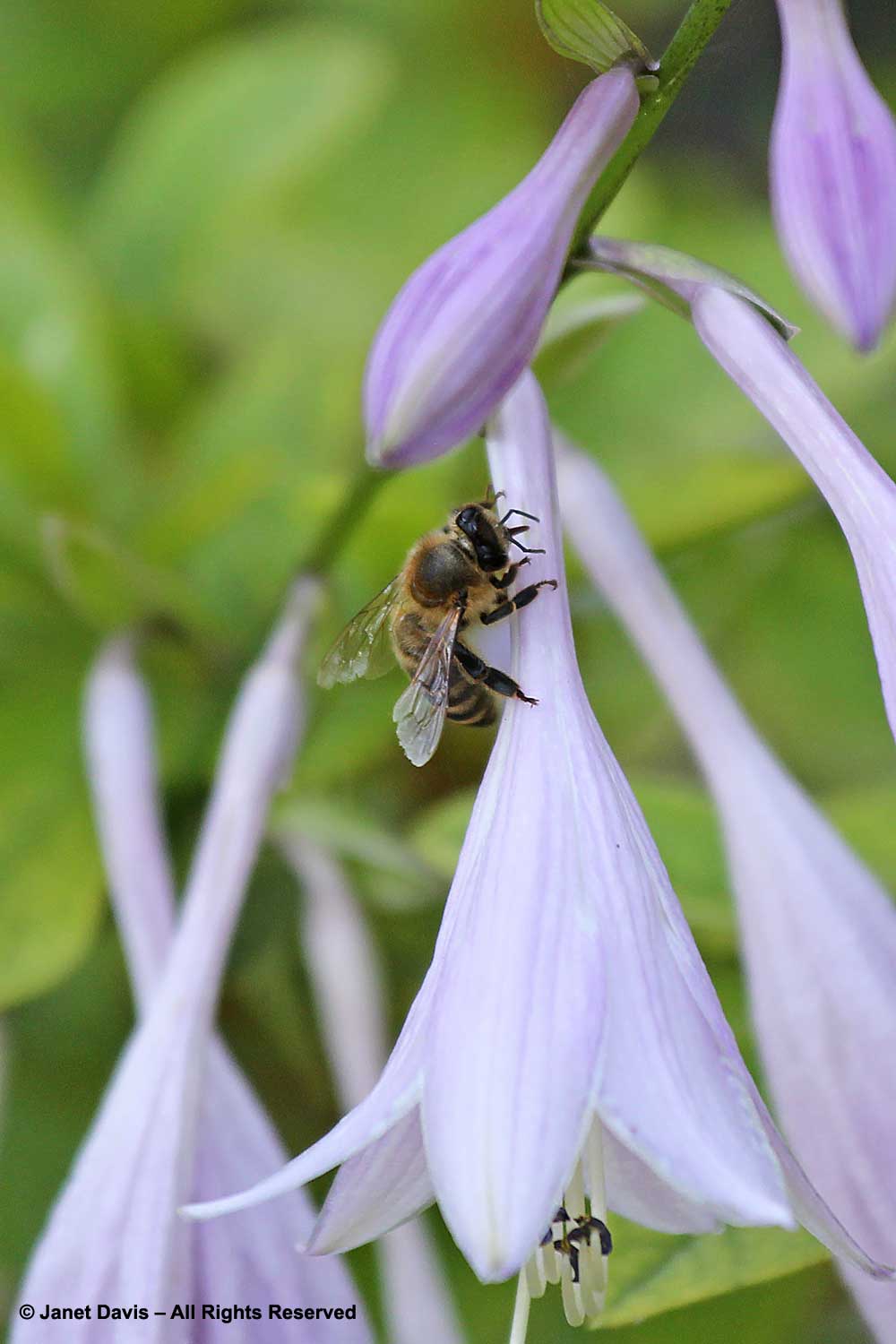
…. which forms the edging of my patio and features in my deck garden.
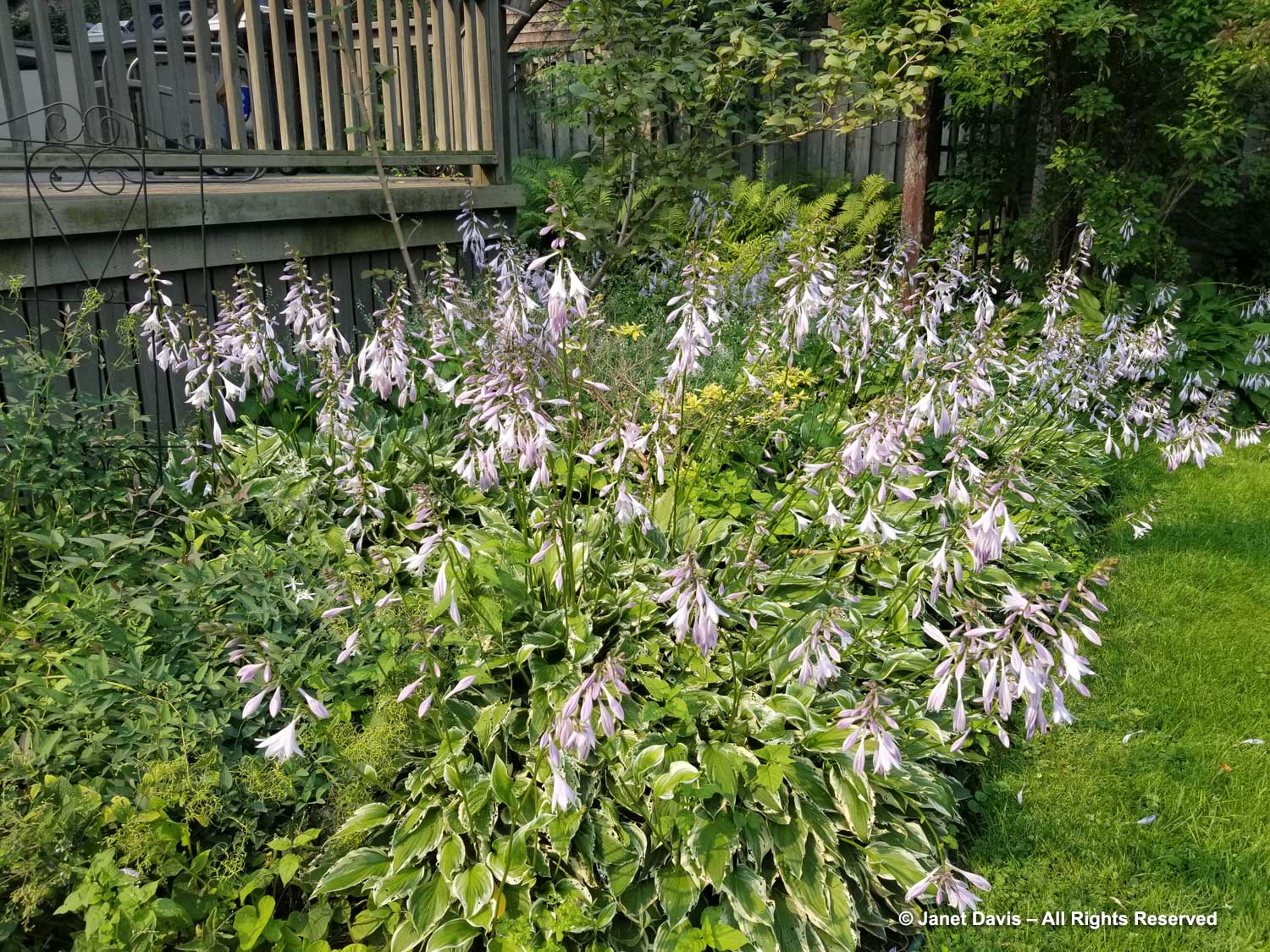
When North America was developing its awareness of native plants in the 1980s, the northeast fell in love with serviceberries. Suddenly, the white spring flowers, edible, dark summer fruit and vivid red-orange fall color were in every ecologically-conscious garden, the species chosen determined by region and commercial availability. For me, that meant planting a pair of shadblow serviceberries (Amelanchier canadensis) in my side yard, where their autumn leaves would complement those of the Asian paperbark maple (Acer griseum) nearby. Because their location is not in my everyday view, I sometimes forget to check in early summer to see if the fruit has ripened yet. Waiting too long is a mistake….
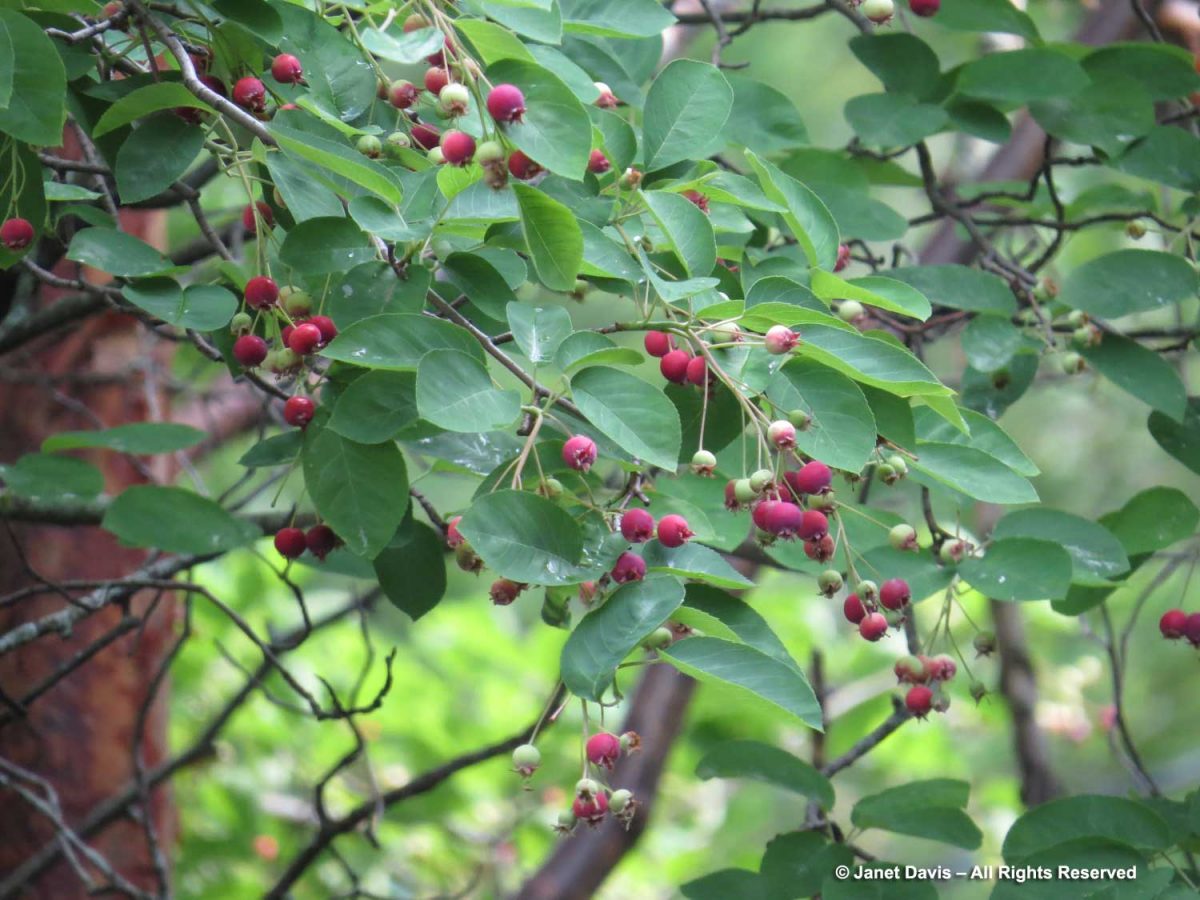
….. because robins and cardinals adore serviceberries, and will strip the tree when the fruit is still red, long before you can have a taste. Needless to say, if you want to attract birds to you garden, you cannot go wrong with a serviceberry!
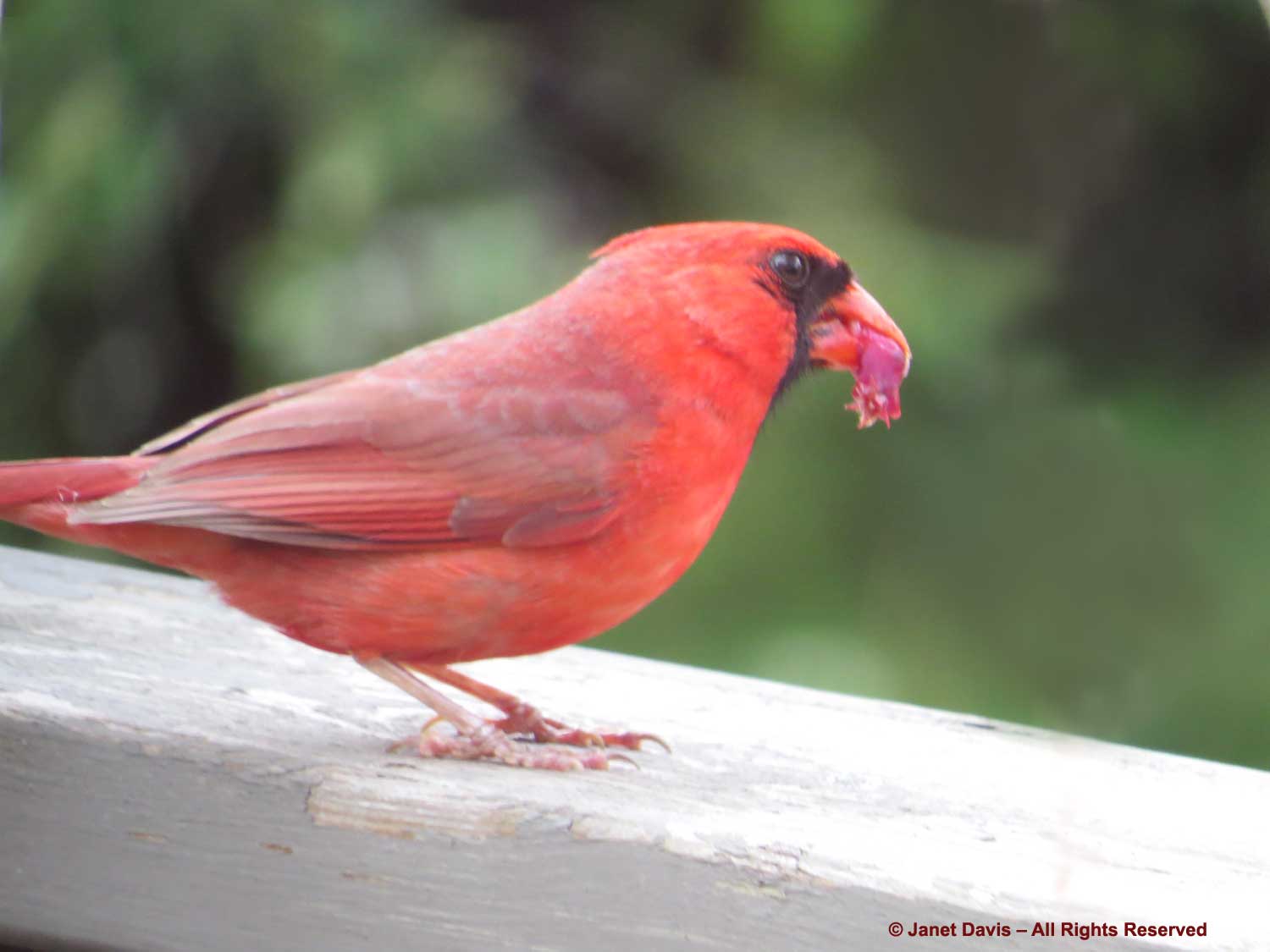
There are many other hardy North American species of serviceberry, including smooth or Allegheny serviceberry (Amelanchier laevis), downy serviceberry (A. arborea) and saskatoon berry (A.alnifolia var. alnifolia), which has been bred as a fruit crop in mid-central and prairie regions. I photograph regularly at Montreal Botanical Garden and their Edibles Garden features a number of cultivars of Saskatoon berry, including ‘Honeywood’ and ‘Thiessen’ below.
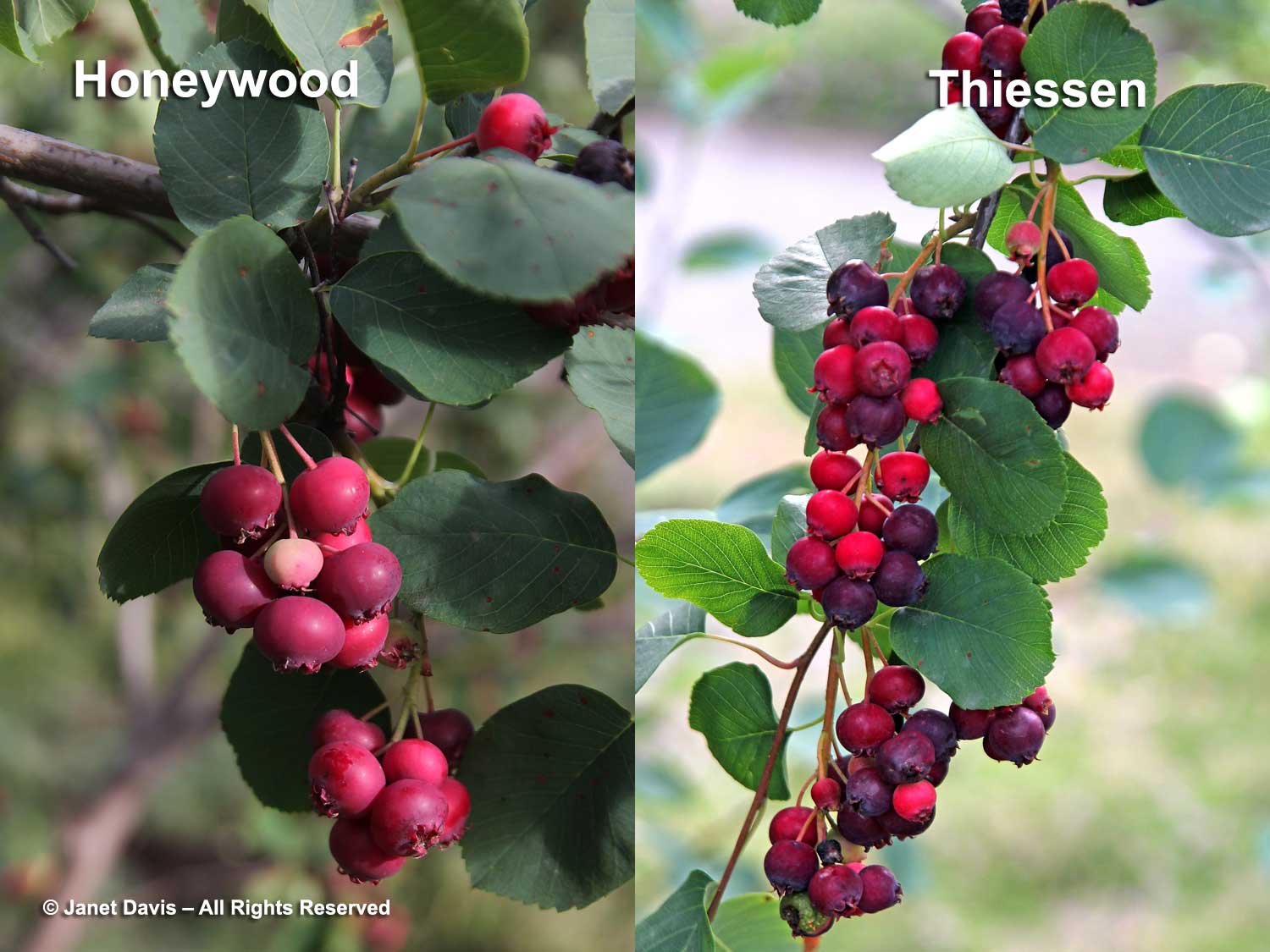
Finally, I was born in the city of Saskatoon, Saskatchewan, though my parents left for the west coast of Canada when I was an infant. My birth city was named after the native fruit, “misaskatwomin” – and you can read that story in my 2017 blog titled ‘Wanuskewin – Finding Peace of Mind’.
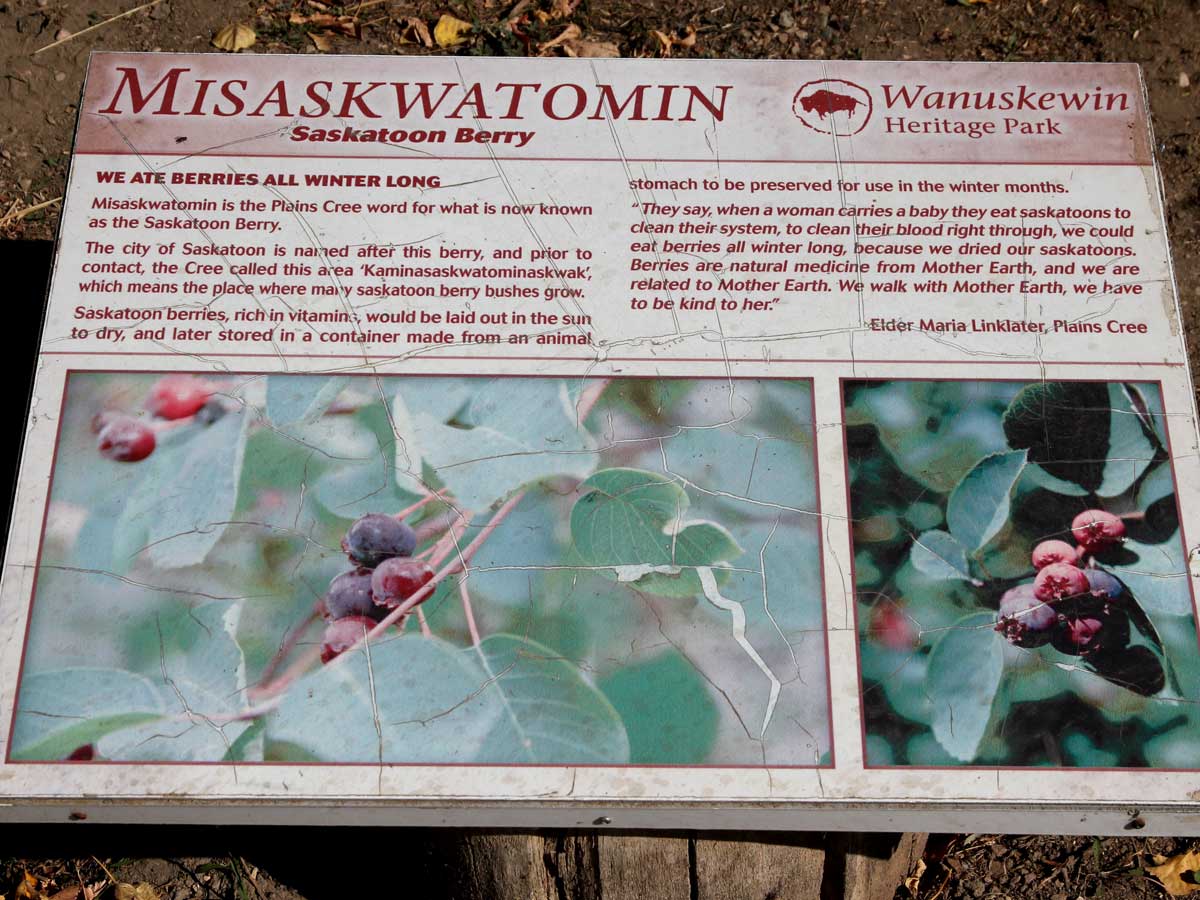
*******
If you missed any of my fairy crown blogs thus far, you can find them below:
#1 – Spring Awakening
#2 – Little Blossoms for Easter
#3 – The Perfume of Hyacinths
#4 – Spring Bulb Extravaganza
#5 – A Crabapple Requiem
#6 – Shady Lady
#7 – Columbines & Wild Strawberries on Lake Muskoka
#8 – Lilac, Dogwood & Alliums
#9 – Borrowed Scenery & an Azalea for Mom
#10 – June Blues on Lake Muskoka
#11 – Sage & Catmint for the Bees
#12 – Penstemons & Coreopsis in Muskoka

I used to cut off the hosta flowers – I’m a bit anal & they aren’t the prettiest blooms – but then I realized how much the bees love them. So the flowers stay.
Thanks, Christine! It just takes a bit of sitting and observing, doesn’t it?
I love this post, Janet. Serviceberries and ditch lilies seem to be shared throughout Northeastern areas of our continent. Ditch lilies occur throughout the Southeastern U.S., too.
And if your hostas flower, why not keep them, after all? Way too many hosta folks just focus on foliage (pretty boring in my opinion).
I completely agree, Lisa. Glad you’re enjoying la belle province encore!